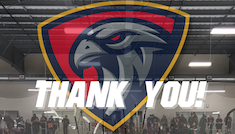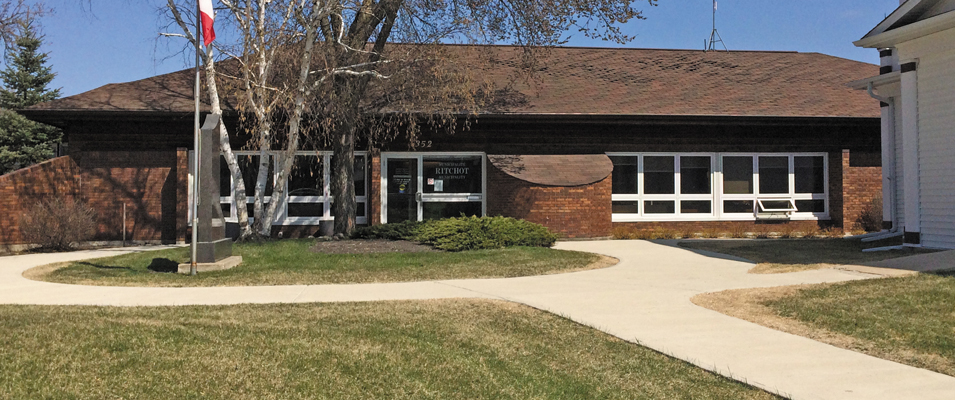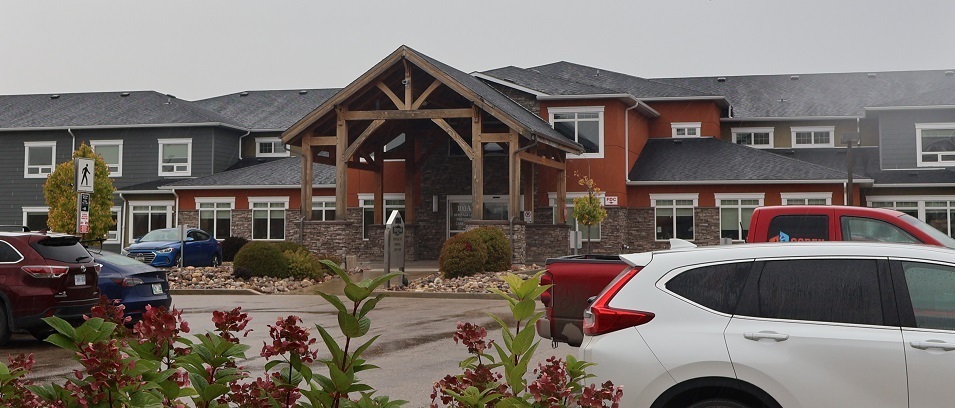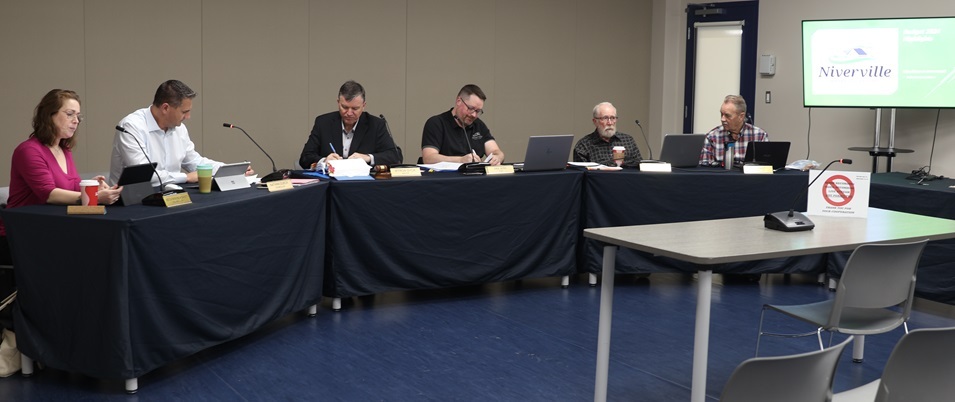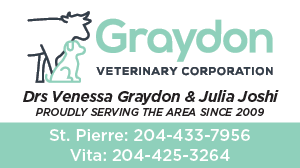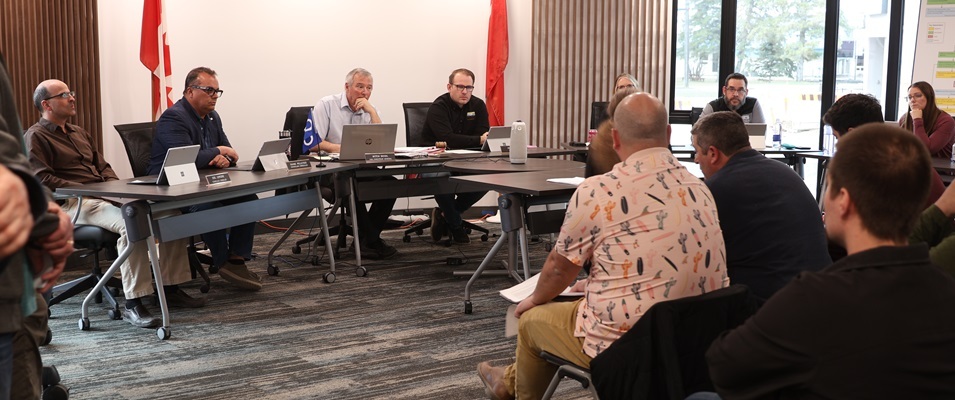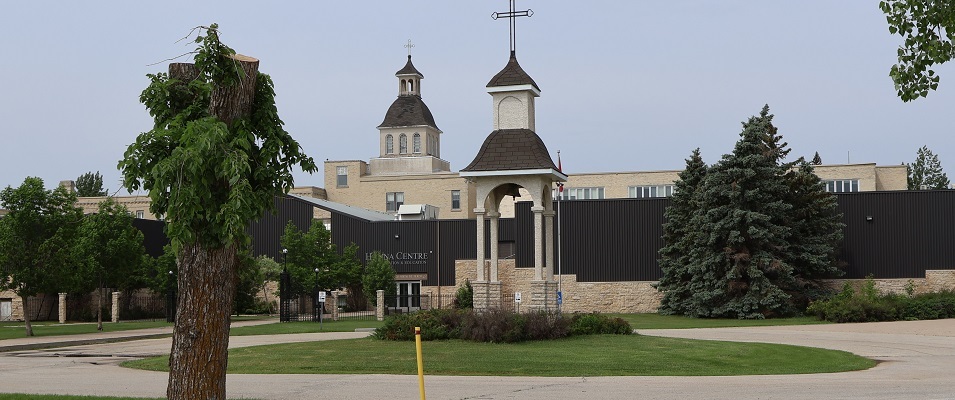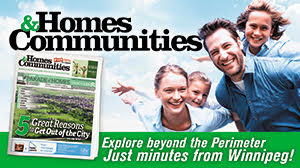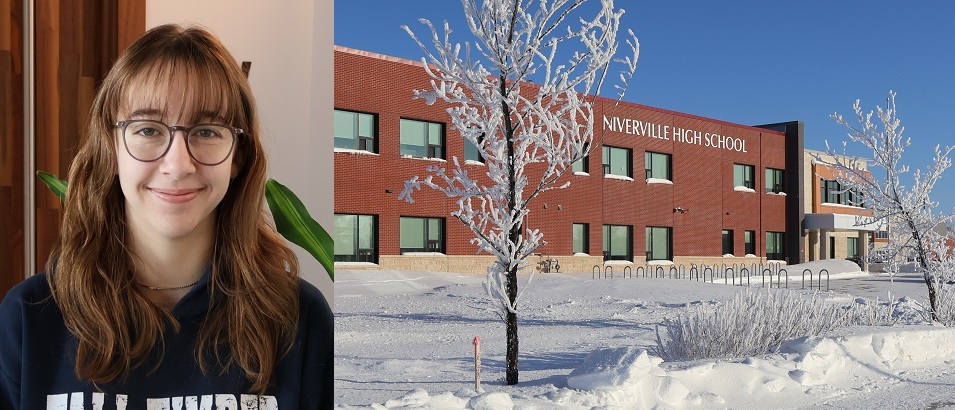
Much of the following information about life inside Niverville High School was provided by parents of students and one former student. The Hanover School Division declined The Citizen’s request for an interview with Principal Kimberley Funk and Funk did not respond to a direct request for an interview. The superintendent of HSD, Shelley Amos, also declined a request for an interview. However, upon further prompting, vice-superintendent Colin Campbell did agree to answer some questions. Michael Zwaagstra also declined an interview, although his relevant writings on the subject of PBL have been quoted.
The fall of 2019 marked a significant moment for more than 300 Niverville students as they entered, for the first time, the expansive and sophisticated new learning space of the Niverville High School (NHS).
Assigned to oversee these students’ academic success was the school’s new principal, Kimberley Funk. Funk had more than 25 years of teaching experience in the Hanover School Division (HSD) and served as vice-principal of Landmark Collegiate before coming to NHS.
As the first NHS school year got underway for students in ninth and tenth grades, so did a teaching model that was still relatively new in its delivery. It was so unique that a parent orientation has been held every year since in order to sell the idea of it to parents of incoming students.
For the first two years of student life at NHS, conventional methods of learning have all but vanished. They’ve been replaced by a combination of interdisciplinary and project-based learning (PBL).
PBL is most frequently described as real-world learning for twenty-first-century students. As the name suggests, it focuses heavily on learning the curriculum through the completion of hands-on projects, both individually and in groups.
The general goal of the PBL model is to replace more traditional methods of teaching such as lecturing, note-taking, fact memorization, and testing.
The philosophy behind it is to provide students with more freedom and decision-making power in their education, presumably making learning more relevant to students than traditional methods have historically done.
Interdisciplinary learning involves combining two or more academic subjects, or disciplines, into one instructional class. In Grades Nine and Ten at NHS, English Language Arts (ELA), Science, and Social Studies are combined into a single course.
An interdisciplinary philosophy suggests that the world isn’t divided into neat categories, and neither should a student’s education.
A Whole New Way of Doing School
But it’s not just curriculum delivery that’s new to the early years at NHS. Here, students don’t move to a different classroom for each subject. Much of the day’s schoolwork takes place in the homeroom setting.
There are no bells to signify the end of a session.
Textbooks and notebooks have basically flown the coop and students are encouraged to search for most of their information online.
At NHS, students are on a first-name basis with their teacher, principal, and admin staff. Gone are the days of Mr., Mrs., and Ms.
Students are given plenty of autonomy in choosing the medium for their projects, based on their individual passions and interests. Drawings, essays, songwriting, or online gaming development are all viable options for producing a project.
Memorization-based tests and exams are more or less gone from this teaching approach. Instead students are individually assessed by the teacher following the completion of a project.
Projects are graded using a scale of limited, basic, good, very good, and excellent to demonstrate the student’s understanding of a topic. Percentage-based grading is reserved for report cards since that is still the only grading method recognized by the province.
Interestingly, students revert to more traditional ways of learning as they enter Grades Eleven and Twelve at NHS. PBL is no longer the focal point of learning in senior high and interdisciplinary courses become optional.
Former Student Tells Her Story
Zoé was a Grade Nine student at NHS during the 2021–2022 school year. Throughout her prior years of education in Niverville, she thrived in the classroom with traditional learning methods.
Zoé recalls the introduction she and her classmates received regarding the new mode of learning just prior to attending NHS for the first time.
“I remember being excited for the PBL program,” she says. “I especially remember the ‘no test’ part.”
It didn’t take long, though, for the shine to wear off for this student.
Zoé has a passion for ELA. She lives to write and aspires to a degree in journalism someday. Frustration set in, then, as her Grade Nine year progressed while the ELA component of the interdisciplinary trio became lost within science and social studies themes.
According to Zoé, her grammar, spelling, and essay-writing skills were not challenged in any meaningful way. In the course of the entire school year, she says there was only one book assignment given and it was based on a social studies theme.
“It would be one thing if we were doing a project and we made grammar or spelling mistakes that we’d get docked points on, but we didn’t,” says Zoé. “My grammar has really gone downhill.”
Another sore spot quickly developed for Zoé regarding her group project experiences. About 50 percent of the projects she was required to do, she says, were in randomly chosen groups of three or four other students.
For someone like Zoé, there’s no question that hard work and effort is required to get the desired mark. The problem, she says, is the injustice of being paired with students who put in minimal effort and yet score high marks based on group effort.
Also a problem in Zoé’s mind is that most of the students were using Google searches as their primary means of gleaning facts, paying little attention to the credibility of their online sources.
From her perspective, plagiarism was also a common issue and, as far as Zoé is aware, students were never discouraged from doing it.
“Me and my classmates realized that no matter how little effort we put in, we still got passing grades,” says Zoé. “So everyone just slowly stopped caring.”
Another frustration for Zoé was her lack of ability to meaningfully track her overall performance. For a student who’d previously worked hard at achieving the highest possible test scores, a score of “good” on her project was a less than satisfactory way for her to measure her own progress. And little input was ever provided regarding areas where she could use improvement.
“Throughout the year I was steadily going downhill,” Zoé recalls.
By the spring of 2022, she says that apathy towards school had set in so thoroughly that she struggled just to get out of bed in the morning. At this point, her report cards were starting to reflect it.
By year’s end, Zoé was unable to open her report card for fear of what she might find. Had a random test been given in any of the subjects she took that year, she was sure she’d have failed it miserably since, in her mind, the curriculum had only been covered in such broad terms.
In May 2022, Zoé made the choice to apply for admission to the Steinbach Regional Secondary School (SRSS) for Grade Ten. To do so, she needed to choose an occupational trade to study. While none of the trades being offered held much appeal to her, it was a small price to pay to get back to traditional learning.
Zoé is back to seeing her grades measured in percentages. She says that most of her marks so far are coming in around 95 percent compared to the “good” or “very good” benchmarks she received at NHS.
She’s found some exciting electives that interest her, such as sociology and ethics, and she’s sharpening her writing and editing skills in ELA class day by day.
“At NHS, we did maybe one project every two to four weeks whereas, at SRSS, there’s new assignments every day and I like that,” Zoé says. “In interdisciplinary, we only got one mark for those three things because they were all combined. Now I can tell that all my marks for those three subjects are very different and I can see which one I’m struggling in.”
She admits, though, that adjusting to weekly quizzes in some of her classes at SRSS has been a challenging adjustment since she fell behind on developing the skill of cramming for tests during her Grade Nine year.
Parents Weigh In
When The Citizen put out a call for feedback, either positive or negative, regarding the new teaching modality at NHS, a few parents reached out. Some requested anonymity for the sake of their child who is or was a student at NHS.
Other parents indicated a desire to share their opinion but, as educators in HSD themselves, they were restricted by the Manitoba Teachers’ Society’s policy in doing so.
The first parent to provide feedback, Parent One, had a student attending Grade Nine during the school’s first year. Like Zoé, one year was all it took for their 15-year-old to look elsewhere for an education. They, too, switched to SRSS where, according to Parent One, they are now flourishing.
Parent One says that she believes the ideology behind PBL is a good one. It makes sense, she says, that in order to encourage independent learning, more students need buy-in through hands-on engagement.
Still, she says, some children also require the structure of traditional learning to be successful and when one modality of teaching is applied to all students ubiquitously, some are bound to fall through the cracks.
“When kids go to high school, there’s a little bit of a different philosophy,” Parent One says. “The expectation is that the student is now ‘responsible’ and that the teacher just teaches… And even though kids have to learn to do their assignments and follow the rubrics and understand deadlines, [all of] the onus is being placed on the student. A lot of these kids are not ready for that, and they still need these teachers to hold their hand, metaphorically.”
For Parent Two, the PBL program seems to be a good fit for her child in most subjects, with the exception of math.
According to this mom, PBL is carried out in her child’s math class by having the students solve math problems in small groups on the classroom whiteboard. Groups take turns doing this in front of all the other students. The students are paired into groups randomly so some in the group may excel at math while others struggle.
“Each student learns at a different pace and doing math together on whiteboards in groups is terribly intimidating for students that might be a bit slower to figure out the problem,” says Parent Two, who adds that her child is shy and doesn’t perform well under this kind of pressure.
“Why do they need to collaborate together on math?” she asks. “Students that are shy or maybe like to figure questions out on their own are scared to be at math class because they don’t feel they have anything to contribute. I wonder if it raises any questions when you see the number of students that leave NHS to go to SRSS. Maybe this PBL learning style is not working.”
Lisa Banman is a Niverville resident and a professor at the University of Manitoba. Her son attended Grade Nine at NHS and opted to leave after the first year.
“I gave him the choice and he decided to go to SRSS,” Banman says. “I teach at the university and I’m familiar with how most universities’ courses are run. Students have to be able to take in information and they have to take notes. I didn’t think that this project-based learning was really preparing him to study in a university setting.”
Banman says that she attended the parent orientation at NHS just before her son entered Grade Nine there. She remembers feeling a level of alarm when the principal introduced the PBL learning style to parents.
“She said if your child did well academically, that you should prepare for their mark to drop,” says Banman. “And if they did poorly [before], their mark would likely go up. It just doesn’t make rational sense to say that a strong student will suffer in this approach to learning.”
Banman adds that one parent at orientation night queried the principal on how PBL would prepare their children for a university setting where traditional lecture-style teaching and tests are still the norm.
According to Banman, this parent received a surprising response: NHS’s goal is not to prepare students for university but rather to prepare them for life.
Even so, Banman is quick to admit that PBL has merit as a teaching style. But she feels that introducing it to high school students before it’s been embraced at the postsecondary level may be premature.
“We’re trying different approaches to get university students more [engaged],” Banman adds. “And I think that’s what the PBL style is sort of aiming to do. But I feel like it might be more suited to part of a semester or subject instead of [the whole of their education].”
Speaking from the experience of her son’s Grade Nine year at NHS, Banman also worries about how fully the curriculum is being covered when students are just working on isolated projects dealing with very specific topics.
“I feel like this is a really big shift from listening to the teacher, who is the expert on the subject, to almost making the students try to become the experts themselves,” she says. “I don’t know if they are at a level where they can do that.”
Another parent, Amanda Kipe, currently has a child enrolled in Grade Nine at NHS. She admits that the shift in learning styles has been a challenge for her son, but he has a positive attitude about it.
As a parent, she’s choosing to support PBL as a valuable path to building practical and transferable job skills for him in the future.
“Learning styles are so different for each of us,” Kipe says. “This style has a bit for everyone and does not cater to the traditional academic style of memorizing and testing. That style does not work when we need to report to a boss or manager. If we want to make changes in our workplace, we have to come up with an idea, know how to research it and present it… We very rarely give our supervisors a paper on why we think the way we do, nor are we given a test on paper.”
NHS and HSD’s Approach to PBL
For this article, The Citizen was not granted an interview with NHS’s principal, Kimberley Funk. When you can’t go to the principal for answers to PBL-related questions, you must instead go to the NHS website, which offers up a video that provides a thoughtful overview of PBL as it’s being explored by NHS staff and students.
“Education was built on a system of long ago and now we’re preparing kids for jobs that don’t even exist,” Funk says in the video. “The world is so different right now. We are inundated with information. We can look things up so quickly, so now we need to know how to navigate all of that information.”
Funk acknowledges that the PBL program, as practiced at NHS, is a response to HSD’s vision for deeper learning opportunities for its students.
When asking Colin Campbell, assistant superintendent of HSD, whether the PBL program was created as a pilot project at NHS—a kind of experiment, as it were—he indicates that, in one form or another, PBL is practiced at all schools in the division.
No evidence was provided, though, which would suggest that any other HSD school is using PBL as the primary method of teaching across an entire grade or grades of students.
“We do not hold the view that PBL is highly controversial,” Campbell says. “On the contrary, PBL is supported by research and is effective in teaching students to be critical thinkers while developing essential skills like collaboration, problem-solving, and creativity. PBL is a strong pedagogical approach to teaching deeper learning which has been in our HSD strategic plan since 2015.”
Contrary to what some NHS students report, Campbell suggests that direct teaching, note-taking, quizzes, and tests are still very relevant to PBL classes in the HSD.
“Our teachers do their best to differentiate instruction and pedagogical practice to meet the needs of individual learners whenever possible,” he says.
As to the concern that students are leaving Niverville in order to get back to traditional learning, Campbell says that the division respects a parent or caregiver’s right to do what they think is best for their child.
At this stage, he adds, there doesn’t appear to be a concerning number of students leaving NHS due to the PBL program.
But, he says, the schools and division welcome feedback from parents, whose concerns are taken very seriously.
“We all work together to make our schools safe, positive, and respectful places for each child to learn,” Campbell says. “There are times, however, when we may have different ideas about the way things could be done, and concerns could arise. Hanover School Division supports a collaborative approach to resolving concerns or complaints.”
He adds that programming and teaching practices are continually assessed throughout the division and parent feedback plays a role in that evaluative process.
Local Educator Sees Risk to PBL
Michael Zwaagstra is a high school teacher at the Green Valley School in the HSD.
Zwaagstra has authored two books on education. What’s Wrong with Our Schools and How We Can Fix Them was published in 2010. In 2019, he released another, titled A Sage on the Stage: Common Sense Reflections on Teaching and Learning.
In a 2017 article written for the Calgary Herald, Zwaagstra criticizes the Albertan education department for pushing an agenda which would move the entire provincial education system away from the “industrial model” of learning to becoming more student-centric.
“Never underestimate the staying power of a bad idea,” Zwaagstra says in the article. “Nowhere is this truer than in the field of education policy.”1
He says that a promotional video on the department’s website describes teachers as learning facilitators and textbooks as artificial constructs. It suggests that classrooms need to reflect more of the real world.
At one point, according to Zwaagstra, the Alberta government even announced its intent to eliminate its long-held model of provincial standardized exams and replace them with assessments that focus on the process of learning as opposed to content knowledge.
“Education gurus come up with new ideas, temporarily retreat from them when they prove to be a flop, and then rename them and try again with a new crop of unsuspecting teachers and principals,” says Zwaagstra. “Perhaps the worst of these new ideas is the notion that specific content knowledge doesn’t matter a whole lot… The gurus argue that students should not waste time memorizing a bunch of useless facts. Hence, the move away from teacher-directed instruction to various manifestations of inquiry- or project-based learning.”
Zwaagstra adds that PBL is actually the repackaging of a very old idea. A version of it originated with William Henry Kilpatrick, a well-known American education professor who wrote an article in 1918 entitled “The Project Method.”
Much of Zwaagstra’s concern with PBL, and other twenty-first-century learning models, is that the emphasis on content knowledge is being ditched and replaced with an emphasis on the process—the creation of a project.
In a paper he wrote for the Frontier Centre for Public Policy in 2017, Zwaagstra describes content knowledge as the understanding of specific facts and concepts.
Content knowledge in history, for example, would include dates, names, and major events that have shaped our world. In math, content knowledge includes such things as the memorization of multiplication tables, and in ELA it might include the study of classical authors such as Shakespeare but would most certainly also include the mastery of the rules of spelling and grammar.
Many educators subscribing to the twenty-first-century models, he says, are using a different set of competencies by which success in learning is measured. These include critical thinking, communication, collaboration, and creativity.
“While these are obviously important skills for students to learn, they are not content specific,” says Zwaagstra. “In other words, these skills can be used in any subject area regardless of academic content and at any grade level. To 21st Century Learning advocates, these generalized skills are more important than the specific content being studied.”2
In reality, though, critical thinking can’t happen in isolation of content knowledge, he says.
In order to think critically about any single historical event, for example, it requires a broader-based knowledge of the key people and events that led up to that moment—something, Zwaagstra says, that won’t happen from a quick Google search, especially when considering that the internet is rife with inaccurate facts and biased opinion.
In fact, he adds, “Googling a subject about which you know nothing is often an exercise in piling ignorance upon ignorance.”
“Learning content is much more than just memorizing a bunch of isolated facts, but it still includes memorizing these facts,” Zwaagstra concludes. “Progressive educators are right to complain when some traditional teachers reduce students to passive vessels and subject them to hours of boring instruction. But progressive educators are wrong to say that students can learn to be critical and creative without knowing these facts. Knowledge is a powerful thing and good teachers know how to make their subjects come alive.”
An online academic resource called Atutor agrees with Zwaagstra that PBL, with all its merits, could have a potential downside.
In a 2022 article called “Pros and Cons of Project-Based Learning,” James Larson extols some of the pros of PBL in the classroom, including the development of cooperation, teamwork, and leadership skills among students. As well, it promotes creativity and can make learning more fun.
On the flip side, though, it requires real creative effort on the teacher’s part to ensure that students working in groups stay on task and that the lazy ones don’t take advantage of the resourceful ones.
Secondly, Larson says that missing content is probably one of the most significant issues with PBL.
“In a traditional classroom, teachers complete a curriculum map, teaching skills in a specific order, and the material’s presentation occurs, no matter what,” Larson says. “With [PBL], it may be challenging to get all the teaching into the schedule as students develop their projects. At the end of a course, the assessment can be quite time-consuming, primarily if a teacher doesn’t get to teach all the content and material. Students who complete a course using PBL often fail fact-based assessments because they have spent so much time completing the project that they don’t engage in enough essential course content and information.”3
Where PBL Shows Measurable Success
At different levels and in different ways, some Winnipeg-based schools are successfully making a focused PBL model work for their students.
The Citizen found three of them, all of which either operate as opt-in programs or accept students on the basis of their application to the program.
Nelson McIntyre Collegiate offers the Propel program, an opt-in program for students who want to pursue individualized areas of interest under the guidance of a PBL facilitator.
The program runs for one semester and can earn a student three to four credits.
Based on a video presentation on the school’s website, students who complete just five months in the Propel program throughout their entire high school experience report having a greater appreciation for school and learning overall.
Sisler High School established the Create program, specifically designed for students whose interests lie in the area of entertainment arts. Here, students can study film, animation, game design, graphic design, photography, and digital media.
The program also focuses on providing mentorship and internships with industry leaders in Manitoba and around the world.
The Seven Oaks School Division (SOSD) can likely be viewed as one of the pioneers of PBL models of learning in Manitoba.
In 2009, the division opened its first Met school, a learning centre separate from the division’s other, more traditional learning institutions.
Today, due to its popularity, SOSD has opened two more Met schools across the division. To attend a Met school, students must apply. But according to Principal Nancy Janelle, almost every student who’s applied has so far been accepted.
While the Met schools have a distinctive focus on PBL, they’ve incorporated it into another model called Big Picture Learning (BPL) which was a mode of learning made famous by author Dennis Littky in his book The Big Picture, published in 2004.
The first BPL school opened in Rhode Island in 1995 and today there are more than 80 of them across the United States and an additional 100 schools around the world.
In the SOSD’s Met schools, BPL means adding an internship component to a student’s high school education.
Between Grades Nine and Twelve, students will gain between five and ten different internship experiences which offer them opportunities for in-depth career exploration and firsthand experience with job interviews.
They’ll learn resume-building and networking with potential employers in their field of interest and some will even find part- or full-time employment while still in high school.
Janelle says that the Met schools attract a good cross-section of students who have a variety of end goals in mind. Some are job-oriented and might get hired by their internships right out of high school.
Other Met students have been awarded large scholarships and received acceptance to competitive colleges and universities post-grad.
The Met schools have former students who are pursuing law and medicine and other former students who are now acting as mentors to new students in their workplaces.
Even so, these schools haven’t let go of all aspects of traditional learning within their walls.
“At the Met school, we still need to adhere to all provincial regulations: curriculum requirements, percentage-based grading, report cards, and provincial exams,” says Janelle. “And sometimes skills and content are taught in a more traditional lecture model as needed. We do also provide opportunities for our students to learn how to study for and take tests, as this is a necessary skill as they enter into postsecondary institutions.”
Kurt Hangle worked as an Industrial Arts teacher at Niverville Collegiate Institute (NCI) for many years. He recalls reading Littke’s book as part of his professional development training along with other HSD educators just over ten years ago.
“That’s actually what sold me on Big Picture Learning. When I read that book, it was like the second coming for me,” Hangle laughs. “I was excited.”
Hangle admits that, if there’d been a Met school when he was a student in grade school, he’d have signed up.
“I’m probably a product of the system that didn’t really get the model of traditional schooling and I would have done better in a practical, authentic, meaningful-to-my-life way of education,” Hangle says.
A few years ago, Hangle joined the ranks of teachers who are willing to do the hard work of changing everything they’ve ever done in their prior educational careers. He became a teacher at one of the SOSD’s Met schools.
He says that PBL in his classroom isn’t unlike the research projects that most high school students are accustomed to doing. Traditionally, though, the project is completed, handed in for a grade, and then forgotten.
Students in Hangle’s class are expected to exhibit their project once it’s complete. It could be presented to fellow classmates or the entire school body.
But three times per year, students are given opportunities to take their project into public forums. Students invite family and community members to attend and provide feedback. Other times, they take them to public places such as shopping malls and talk to anyone willing to hear about their project and it’s end results.
“[This] public exhibition component, I think, brings authentic value to the student,” Hangle says. “They’re actually displaying it in a real-world setting to get public feedback and critique.”
Another philosophy of BPL is to allow students autonomy in exploring projects that they feel passionate about and that have a real-world impact.
Projects can take months on end to complete as students perform fieldwork, conduct experiments, interview real-life experts in the field, and pore over research papers on the subject.
“For one of my students, the big question that she’s trying to solve is… the long-term impact of zebra mussels in Lake Winnipeg,” Hangle says. “She has an interest in marine biology, so this is something that really matters to [her] and [it’s] driving her inquiry project.”
Hangle says that he’ll expect to see upwards of 10 to 12 different resources cited in each student’s project. At times, when students find field experts to interview, an internship may also come out of that.
Hangle isn’t willing to assume that PBL or BPL is for every student. All he knows for certain is that it is proving to be a successful model of learning for many of his students.
“We have [thousands] of students at Seven Oaks and [a few] hundred of them are Met students,” Hangle says. “So there’s still the traditional model of school run here.”
For parents, educators, or students who are questioning the efficacy of the PBL model, Hangle recommends a YouTube documentary called “Most Likely to Succeed.”
Conclusions
At the end of the day, even those like Zwaagstra who don’t fully condone the way some educators are rolling out PBL have to admit that it can be a useful tool for highly motivated students who are able to direct their own learning.
In another article Zwaagstra wrote, this time for his weekly column in The Carillon called “Think Again,” he cites the example of SOSD Met schools, highlighting that significant success has been achieved through their delivery method.
“One of the key reasons behind the success of the Met schools is the fact that these schools are voluntary,” Zwaagstra says. “Students and their parents must buy in to the educational philosophy of these schools. Otherwise, they cannot attend.”
As for the success of PBL at NHS, it’s probably too soon to tell. The first students exposed to NHS’s PBL method in 2019 will be graduating this coming June.
Any way you slice it, though, it’s a whole new educational model for both students and NHS teachers alike. In NHS’s case, everyone’s a learner.




